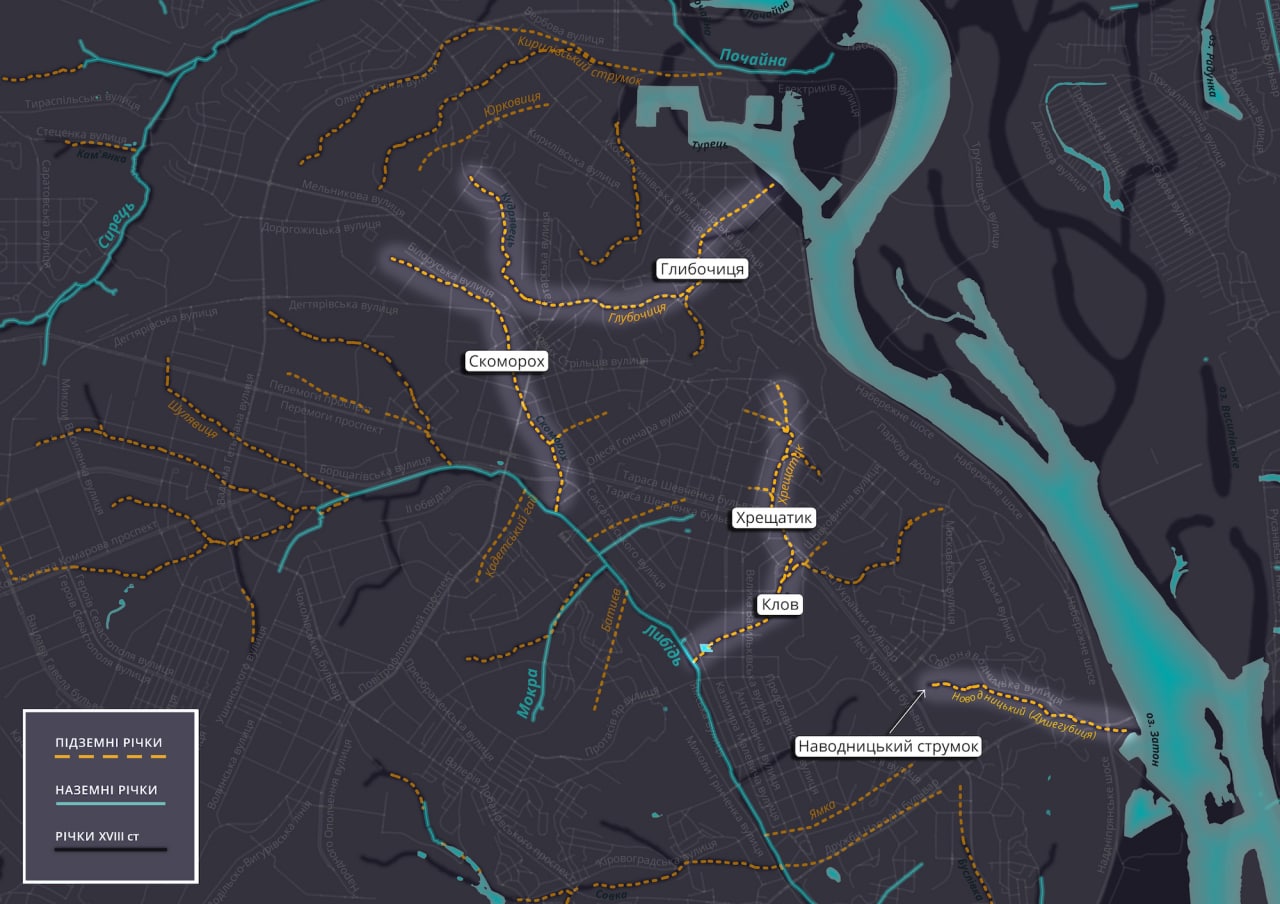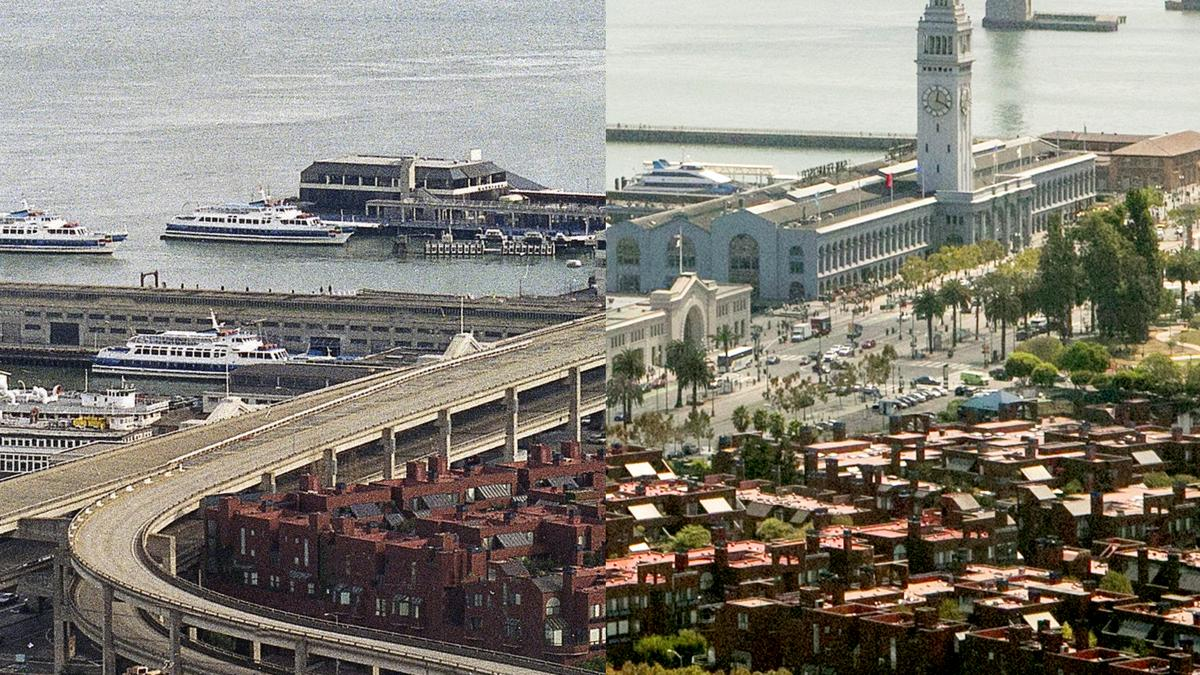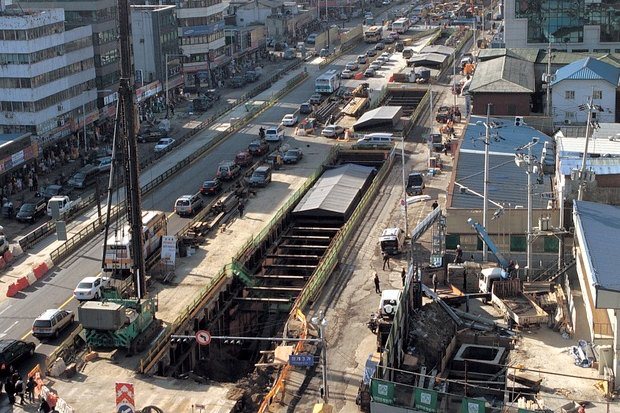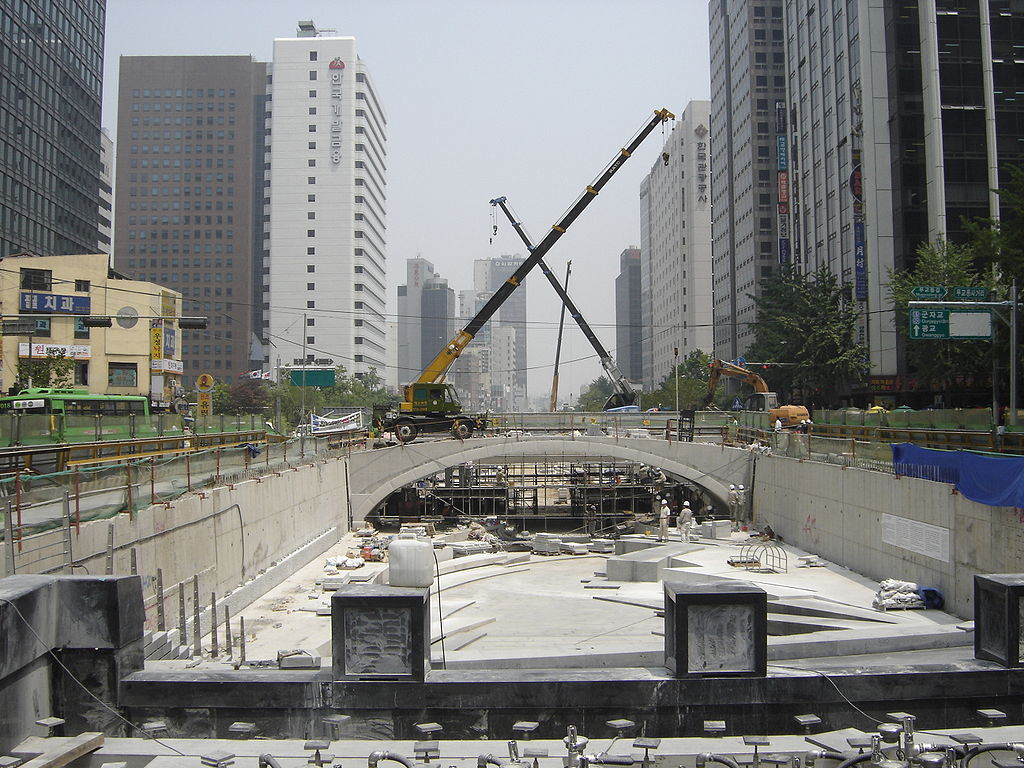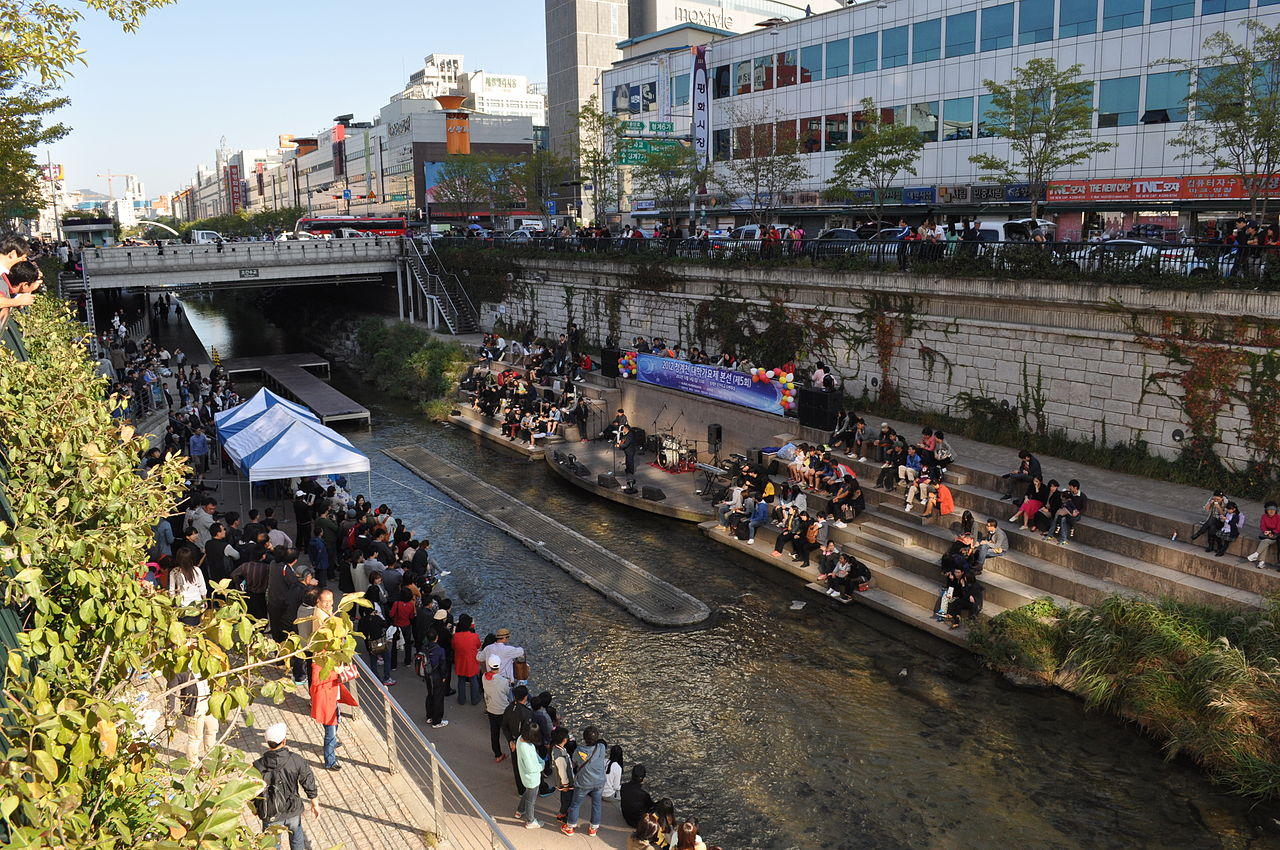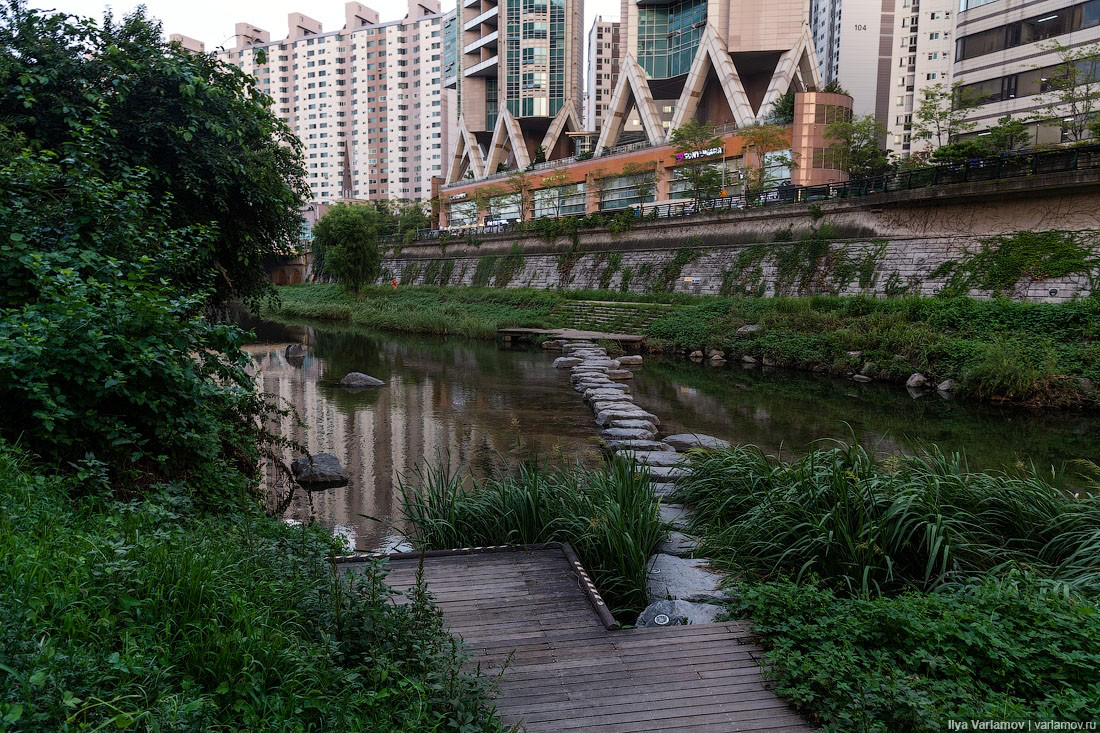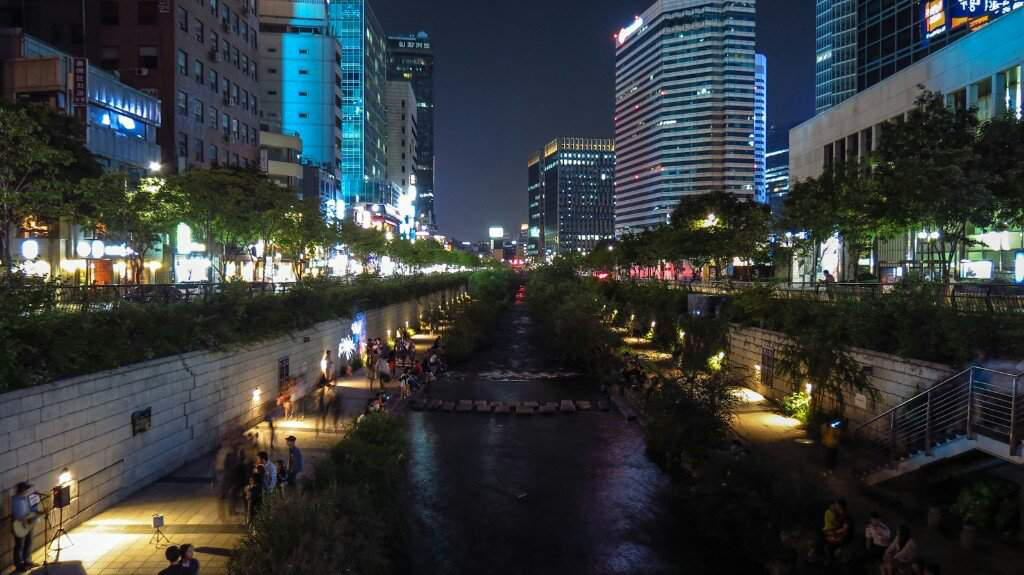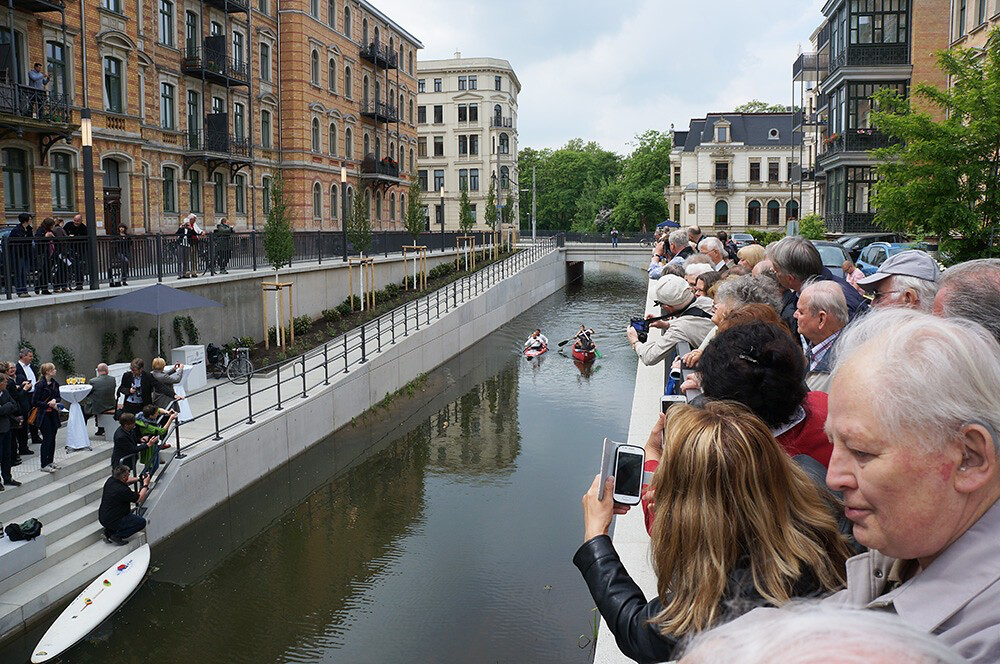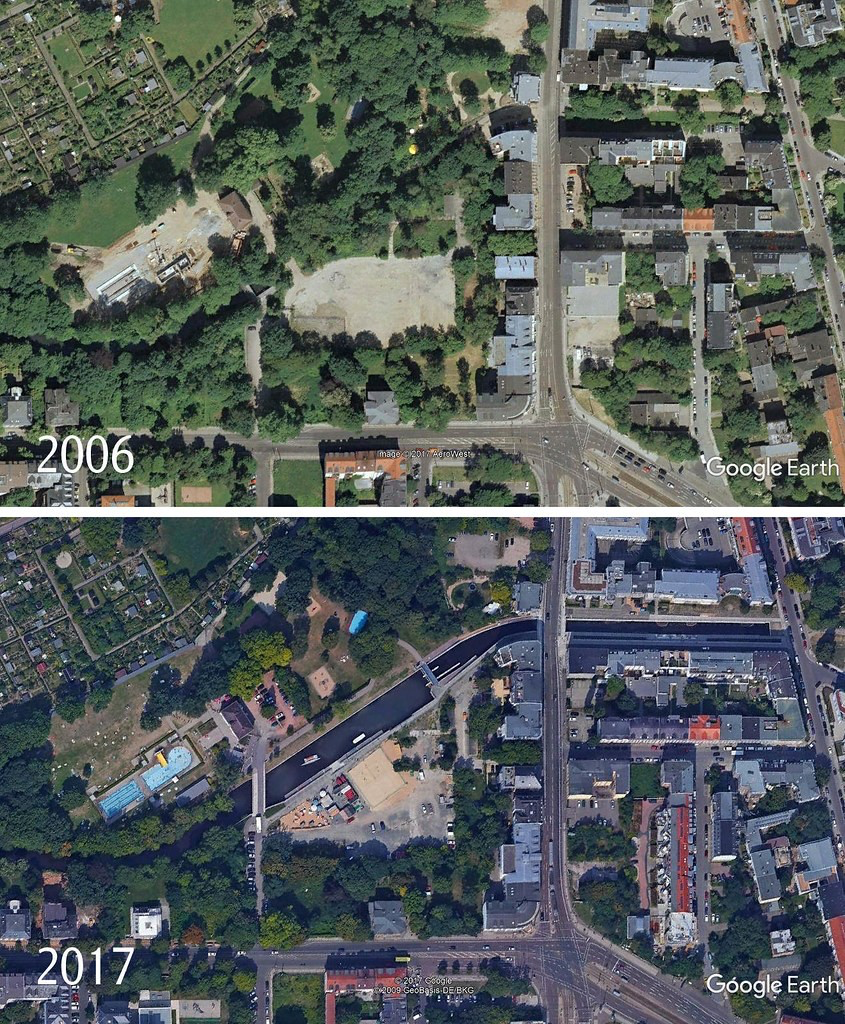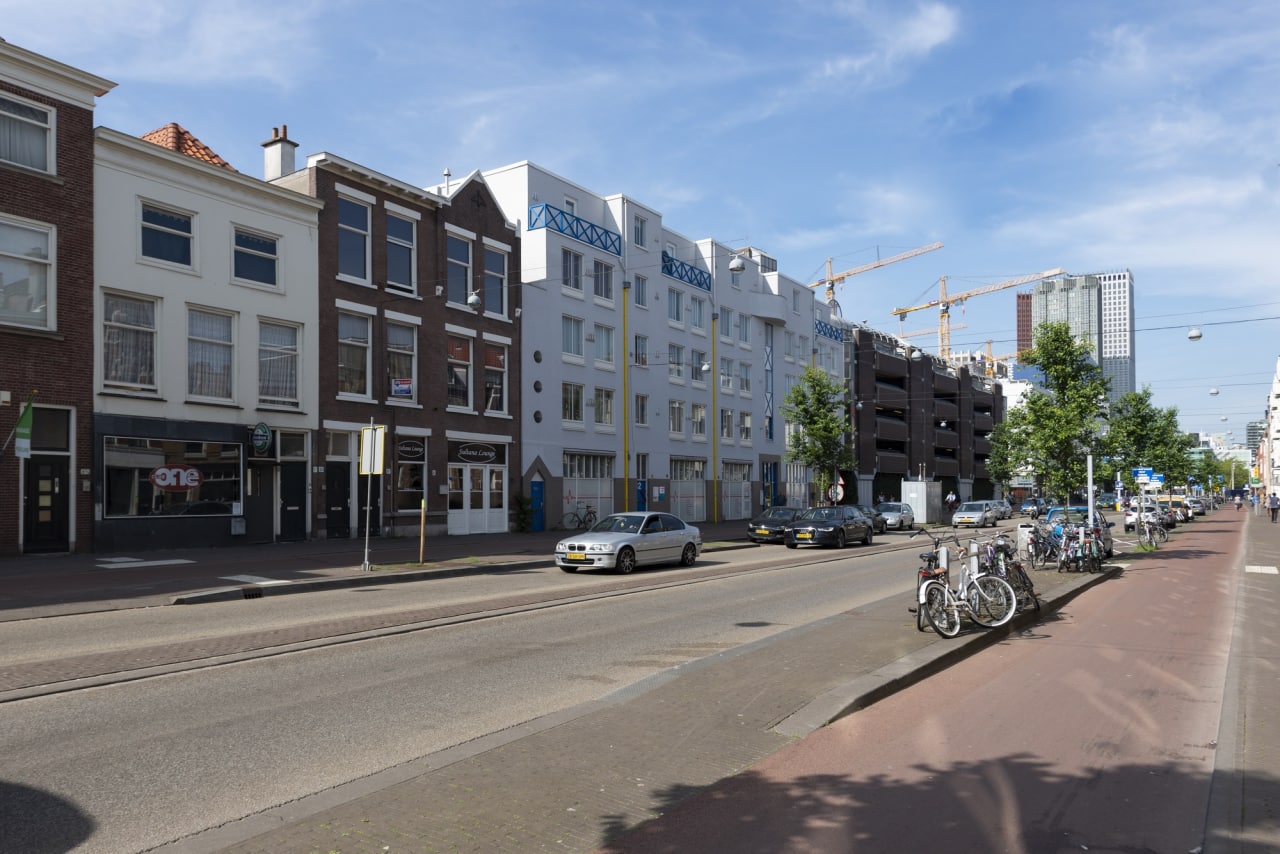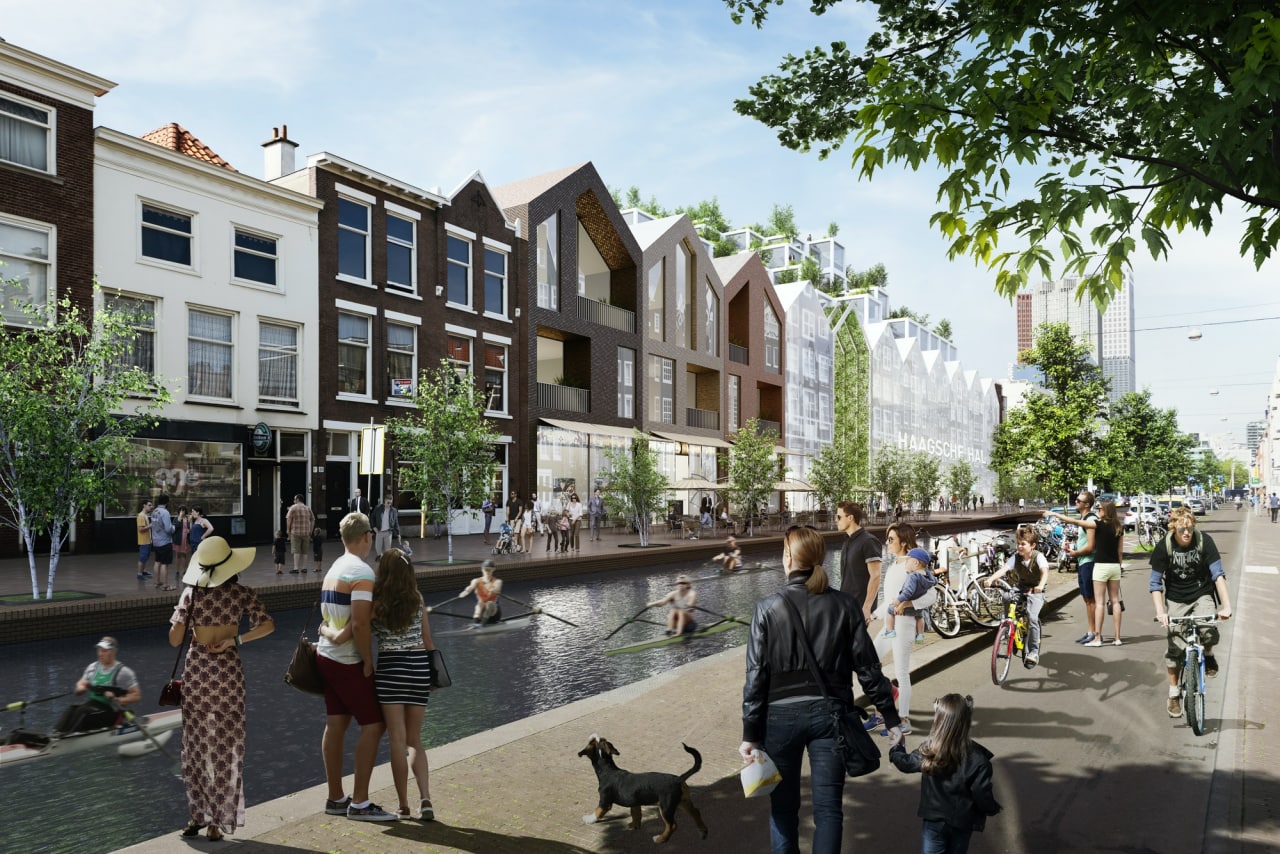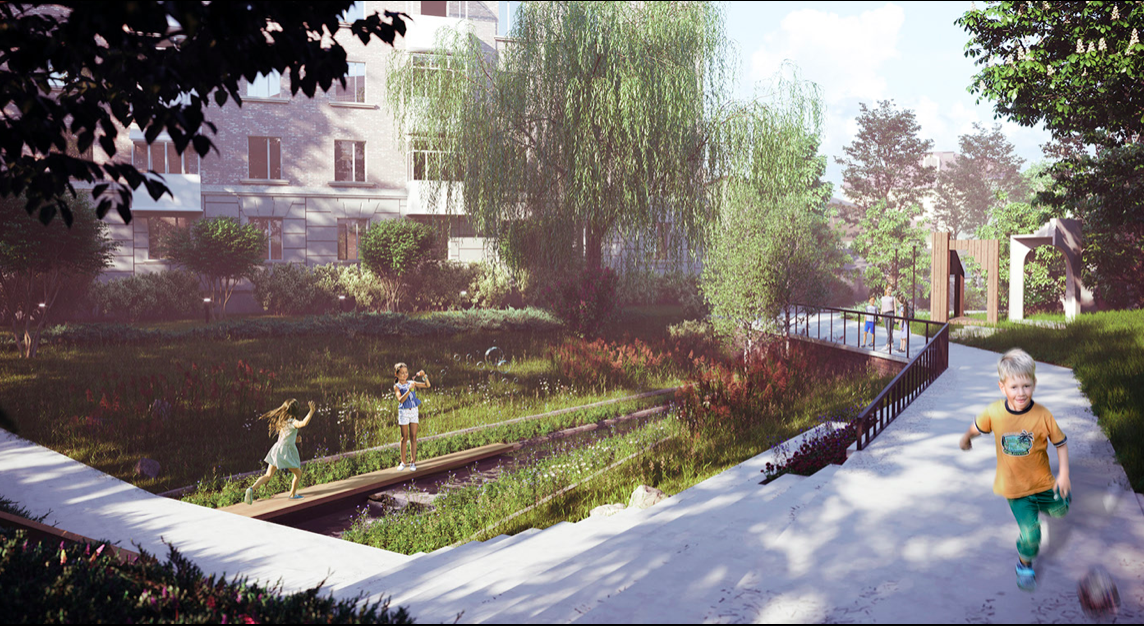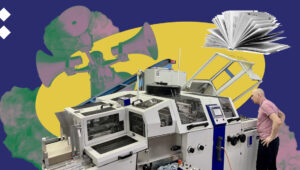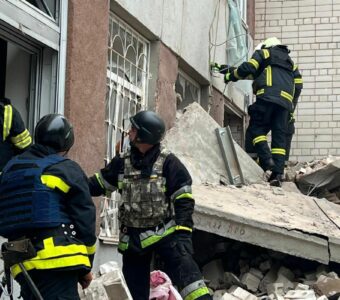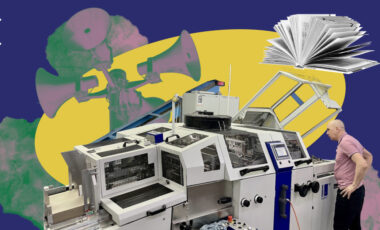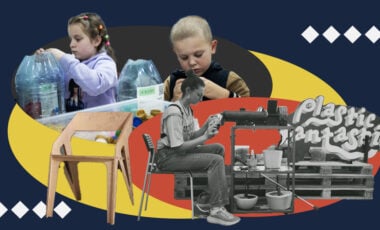New urban trend: how Kyiv can become a garden city with streams and rivers
We explain the details of Khreshchatyk transformation with the author of the idea and alteration of other rivers in Ukrainian cities, which will soon flow through their streets
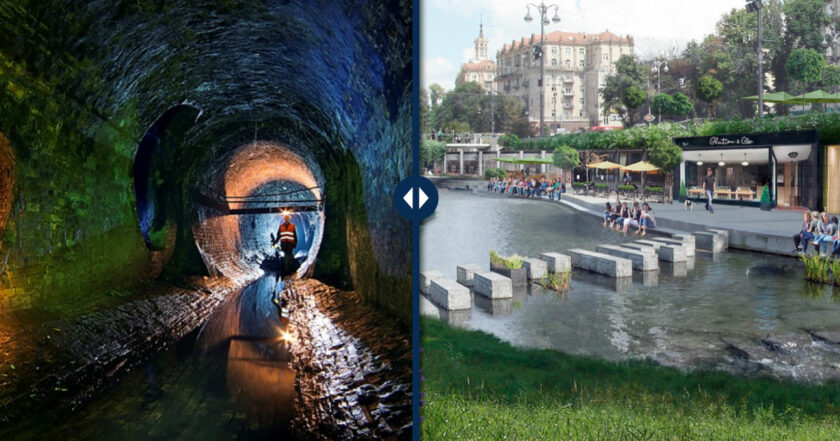
We found an architect who offers to excavate the Khreshchatyk River, which flows in sewers right under the central street of the capital. Viktor Bilous explained what his idea was, how to implement it, and in which cities it had already been done
What is the problem?
Kyiv is threaded with rivers. Once upon a time, back in the chronicle times, they flowed in ravines between the wooded hills of the then unpopulated area, running quietly in drought times, and turning into stormy rivers during the rainy season; mentions of more than fifty small rivers and streams have come down to us from the past. Some still exist today. We can see them on a modern topographic map, but most were hidden underground. Over time and with city development, the rivers turned into gutters, and when they were no longer needed by city planners, they were completely enclosed in sewers.
There are quite a few of them in Kyiv: the Lybid River, Syrets, Skomorokh, Khreshchatyk, Klov. All these rivers flow through collectors. They're marked with a yellow dotted line on the map.
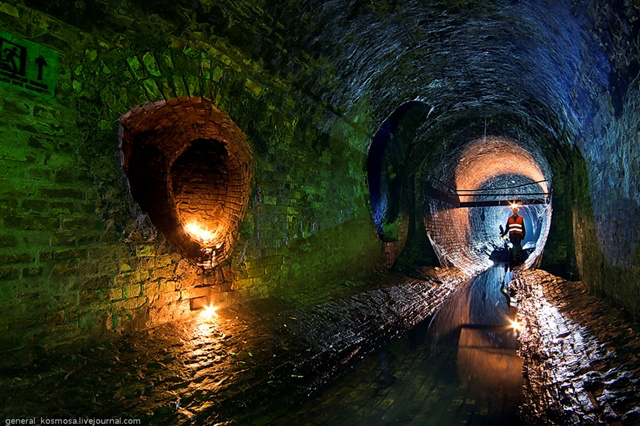
The collector, built during 1888, where the Khreshchatyk stream flows, passes under Khreshchatyk Street. Photo: Vladyslav Vozniuk
"Locking up" took place at different times. For example, this photo of urban explorer Vladyslav Vozniuk shows a brick collector along which the Khreshchatyk stream flows. This collector was built back in 1888. It is located in the very center of the city, right under Khreshchatyk.
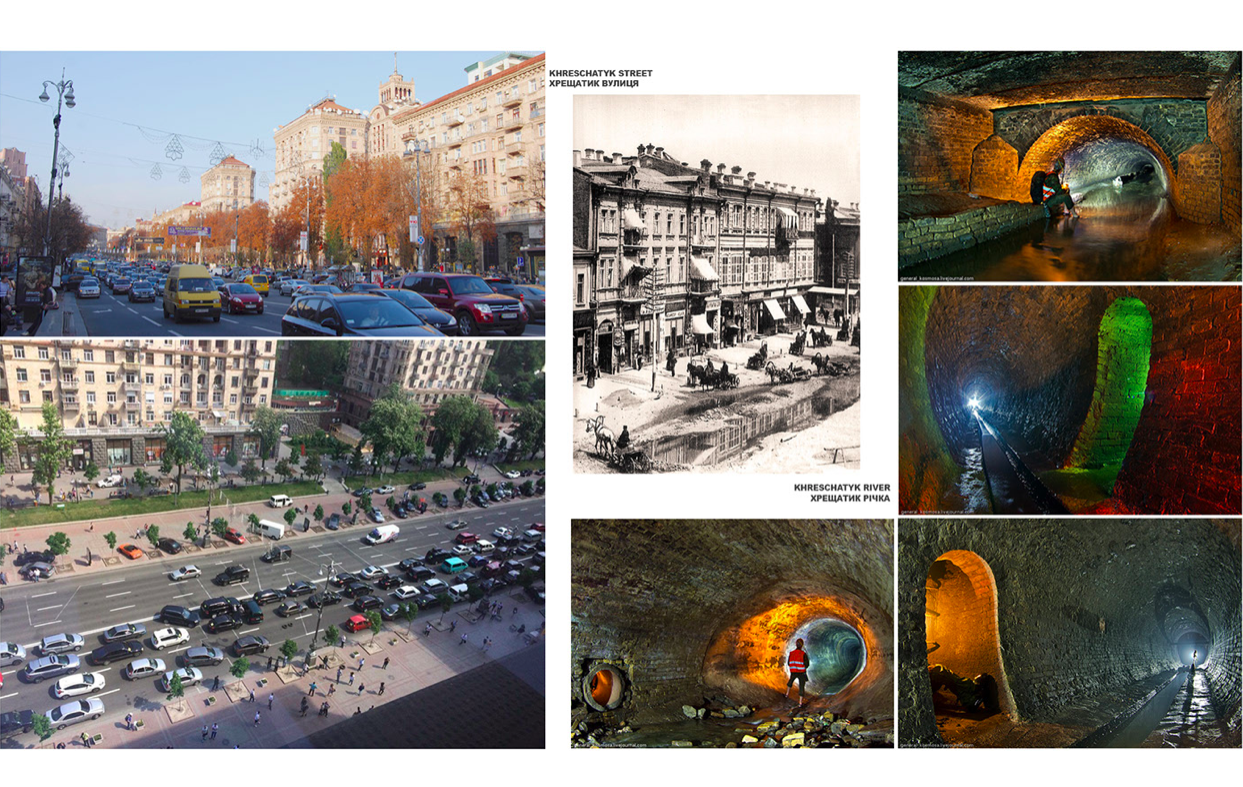
The troubles of Khreshchatyk. Source: behance.net
As a result, we have a wide — up to 75 meters in some places — street with a 25-meter carriageway, which narrows on both sides of Khreshchatyk. This not only leads to traffic jams but also makes this part of the city center completely non-pedestrian: with huge facades that are interesting to look at only when moving at the speed of a car.
What is the solution?
The trend to bury rivers spread throughout the world during the 20th century, as hiding a stream in a sewer was the cheapest solution, and the advent of cars created the need for road construction. Therefore, two birds with one stone were killed at once, albeit not in a very elegant and gentle way to the environment and city residents. But now, when architects around the world began to ask themselves about the need for public spaces where citizens' social activity should take place, city rivers everywhere began to be freed from collectors, and parks were built around them.
Viktor Bilous is a caring and talented Kyiv architect. And he's also a co-founder of the Lybid Ye public organization. In collaboration with Semen Polomanyi, the architect was preparing projects to transform the city. For example, on the banks of the Lybid River near the Ocean Plaza mall, there could be a public space, similar to some of the Dubai malls, with themed neon sculptures and a place to relax.
The Khreshchatyk project was created in 2014 and finalized in 2016, but everyone recognized it only now. Its core is to raise the Khreshchatyk River from the collectors to the surface. A huge number of people found out about the project, and Viktor Bilous is surprised and glad at the same time that the public is interested in the project, which seems fantastic but is still real. This confirms the growing dynamics of public interest in urban projects.
"The book Small Rivers of Kyiv by Viktor Vishnevskyi had a significant influence on the project's concept. From the book, I learned about the existing river, which to this day flows under Khreshchatyk Street. For me, it was such a surprise, and apparently, amidst everything that happened, the image formed in my head in a second. I can create an original space of family values for people," the architect told us.
And Viktor and his colleague, Semen Polomanyi, started developing the project. An entire team of seven people worked on it, and the project wasn't developed for a week or even a month; it took about six months to create. And not in vain. What materialized at the end looks more like a city of the future, or, at least, a green airport in Singapore. The project proposed by the architects assumes a total transformation of the street. Khreshchatyk can become a green oasis with a 4-meter wide stream, become a public space where you can go for a picnic, do yoga, spend time with children or a dog. A vast park, 1200 meters long. How do you like this idea?
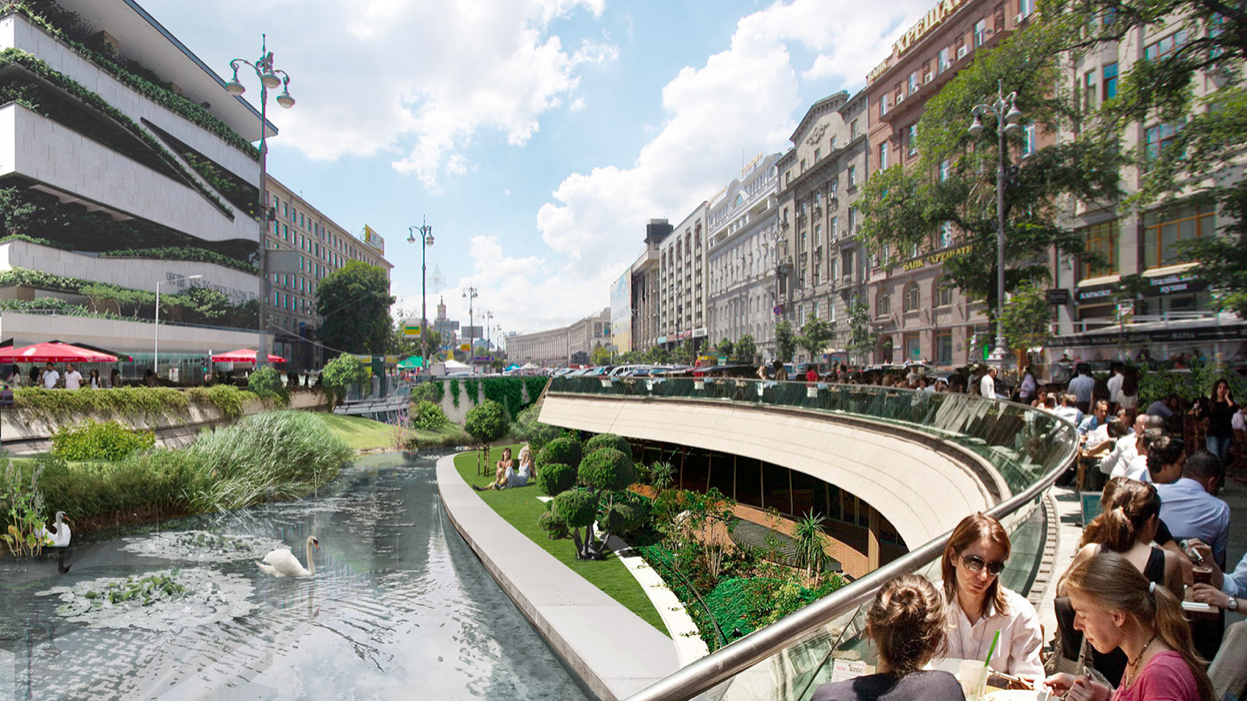
The concept "Restoration of the Khreshchatyk River." Source: behance.net
The project involves, first, releasing the Khreshchatyk stream from the collector, and equipping the green zone around it. At the same time, shops and boutiques will be located on the "first" floor, at the level of a stream, and on top, there will be a huge green lawn canvas with benches and places for rest. The Maidan Nezalezhnosti Square will also undergo changes. Now divided by a road, it will become a single pedestrian area:
"The center should be for people. It should be an environmentally friendly, safe, comfortable, and inspiring space. And above all, it should be for families. In summer we will get a modern green park, and in winter, it will be a territory for winter games for children," says Viktor Bilous.
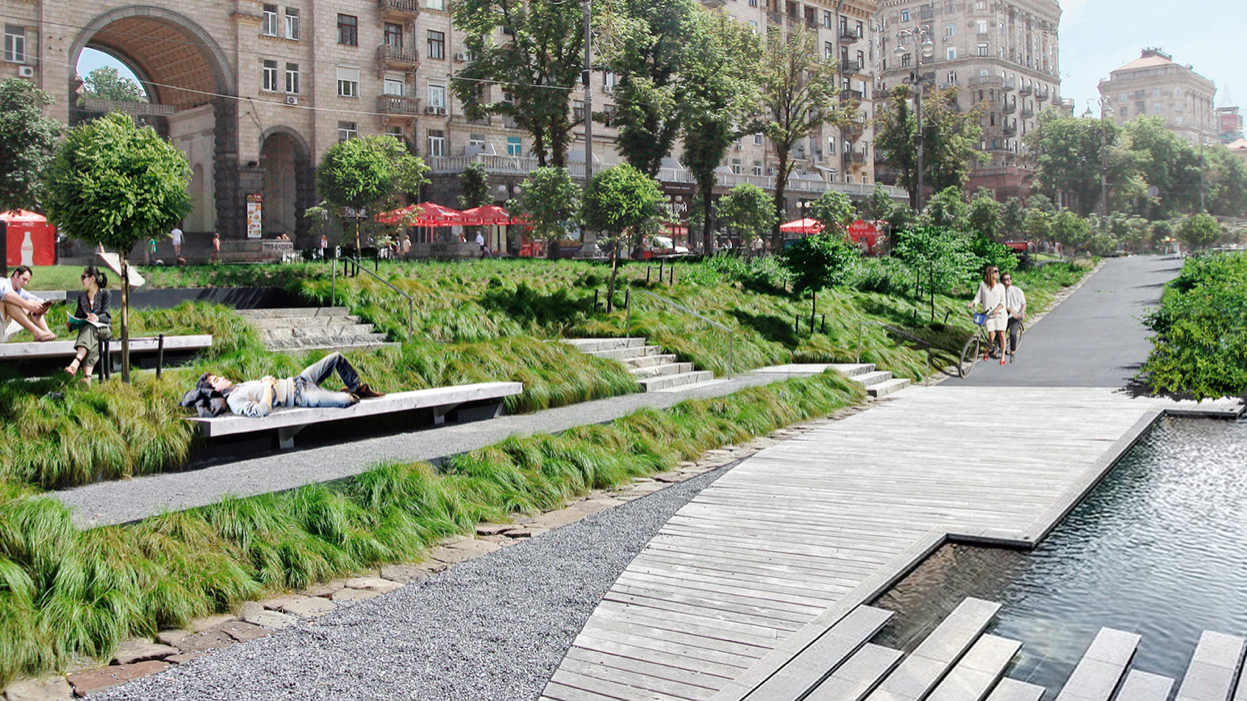
The concept "Restoration of the Khreshchatyk River." Source: behance.net
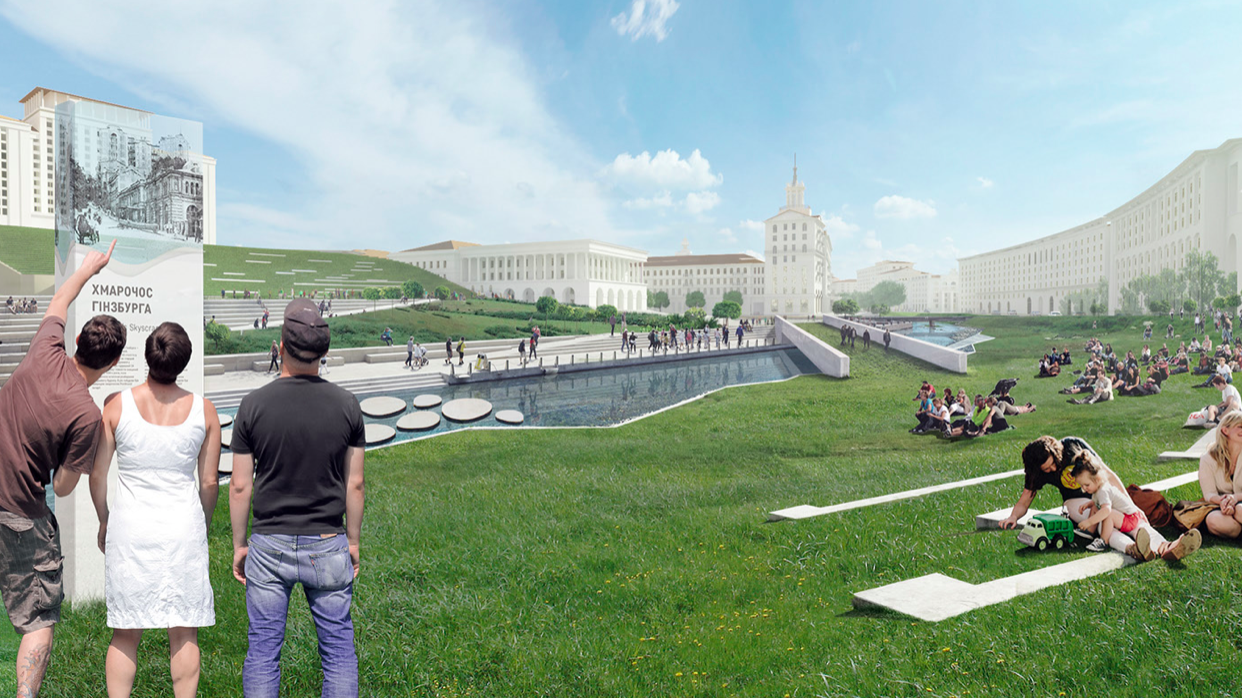
The concept "Restoration of the Khreshchatyk River." Source: behance.net
The project starts from Bessarabska Square; there was a natural bed of Khreshchatyk. In this place, the stream "turns" under Khreshchatyk Street.
Another bold idea is to return the tram to Khreshchatyk. It was once there, but after the military restructuring, it was removed. In one of the variations of the innovative project, tram tracks were laid along Khreshchatyk, which should connect Taras Shevchenko Boulevard and Podil.
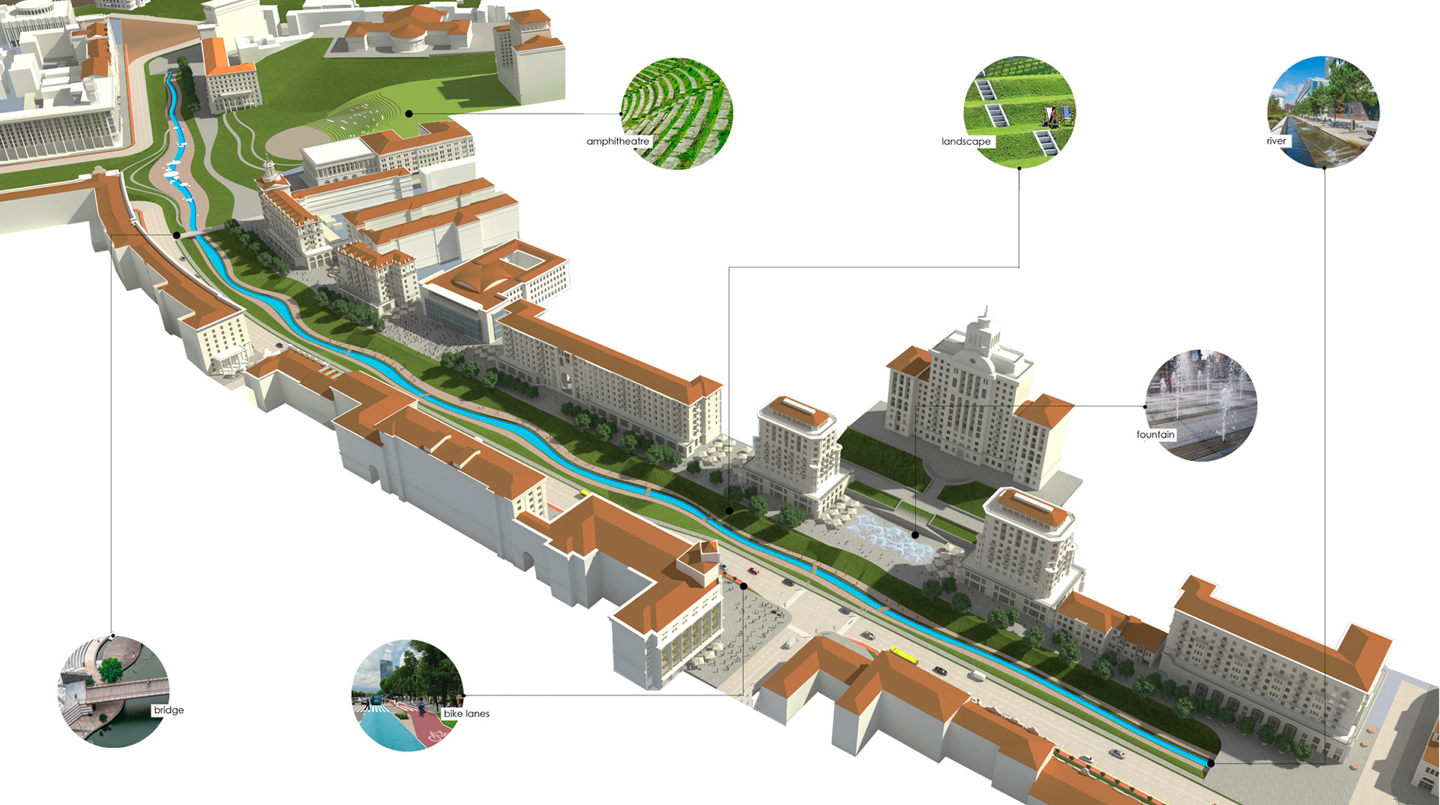
The concept "Restoration of the Khreshchatyk River." Source: behance.net
Will this work?
If the number of car lanes is reduced, won't there be more traffic jams on Khreshchatyk?
The new project involves reducing the number of lanes on Khreshchatyk to three. Such a bold solution might intimidate car enthusiasts, of course. However, practice shows that reducing the number of traffic lanes doesn't affect the streets' traffic capacity.
Now there are 8 lanes on Khreshchatyk. Back in 2015, the A+S Ukraine company, with the German model as a base, developed several movement models along Khreshchatyk, including a version with pedestrian crossings, which has been implemented now, and also a model that assumes only 4 lanes (2 in each direction). As you can see with the example, it won't lead to a transport collapse. Quite the opposite, traffic will be reduced, and since there will be no road narrowing as at the beginning and the end of Khreshchatyk, traffic jams will go away.
And it should work. When the Embarcadero Highway in San Francisco was taken out of service following the 1989 earthquake, drivers quickly adapted and found other detours. Today, the Embarcadero is a pleasant boulevard with trees, trolleybuses, and conditions for walking and cycling. The same can be done on Khreshchatyk.
"No problem. We can reduce the number of lanes on Khreshchatyk to six. Then we'll fit a stream, and a green area, and bike lanes, and it will also be problem-free for transport," the architect promises.
There's very little water in the photo of the collector, but there's an entire river in the project. Will there be enough pressure?
Enough. It's what Viktor Bilous says and reveals his architectural secrets.
First, for safety reasons, the trickle will be shallow: "It only looks like an Amazon on the project," he jokes.
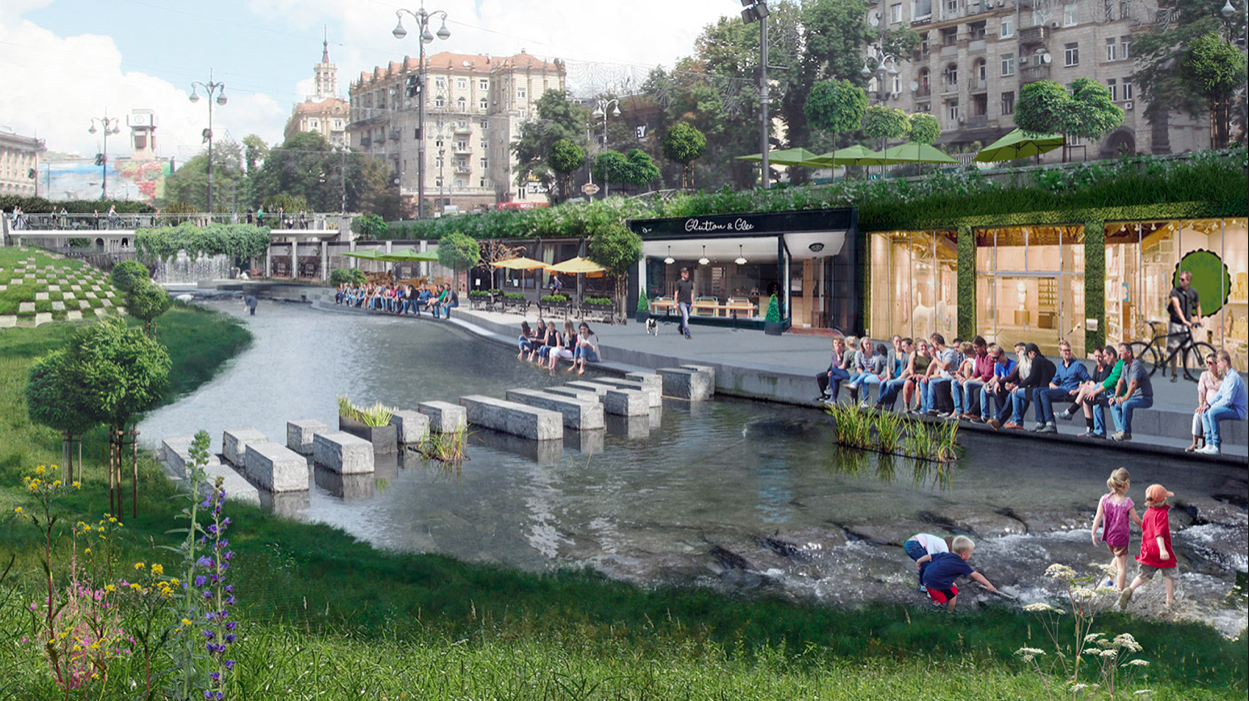
The concept "Restoration of the Khreshchatyk River." Source: behance.net
In reality, the channel's up limit depth is half a meter, and it's maximum. In addition, there are several more ways to increase the water pressure in a city stream:
- Making it narrower in some places than in the image. Two meters instead of four.
- Building small dams to slow down the flow and thereby increase the water section width.
- Installing extra pumps that will additionally pump water into the stream and distill it in a circle.
The last trick was used in Seoul; the water in the famous Cheonggyecheon stream is pumped to keep it flowing. By the way, it was this project that once inspired Viktor Bilous to create the Khreshchatyk project. The architect told how, back in the 2000s, his father, from whom he took over the profession, brought brochures with a project to restore Cheonggyecheon after a visit to Seoul; even then Viktor planned to do something similar in Kyiv. And it's no coincidence.
The story of Seoul Cheonggyecheon resembles the fate of Kyiv's Khreshchatyk. In the distant 1950s, due to active and dense settlement on both sides of the stream, the canal turned into a fetid sewage ditch that posed a biological hazard. The economic situation in the post-war country didn't allow the allocation of huge funds for environmental friendliness and the construction of public spaces, so the stream was completely hidden underground in 1968, and an elevated motorway was erected over it. In 2005, Cheonggyecheon was restored, and the stream bed was cleared, and the track was dismantled.
Now, on the site of the highway, there is a huge public space 11 (!!!) kilometers long, almost 10 times more than the project of Bilous and Polomanyi suggests! Such a project cost the Koreans $280 million, but now it has become a hallmark of the city for tourists, a place for jogging and walking for Seoul residents.
"The key thing is to have a green zone: it is the thing that shapes people. And if you look at the visualization, it seems that it's an insanely expensive and unattainable project. But actually, it is not. It can be implemented in parts," says Viktor.
More useful solutions!
Ducks and protests against the canal in Leipzig
A refined space around a river in a city is not a new idea at all, and everyone would agree with that. But digging up rivers, releasing them from collectors, one might say, is an urban planning trend!
For example, here is a case from Leipzig, Germany. You can call it fateful because Leipzig is Kyiv's sister city. It was once famous for its canals, created to regulate the effects of flooding, but during the 1950s, more than 3 km of canals were hidden in underground sewers or simply covered with soil. At the end of the 1980s, the Neue Ufer movement was born in the city to restore the canals and return the city to its personality. It included artists and architects who collected materials, held exhibitions, and explained the importance of water restoration in the city. As part of one of the rallies, they installed pegs along the former canals on the streets.
As a result, the movement received city-wide support and grew into an urban project. In the 2000s, they began to restore canals on the streets; new channels were opened every 2-3 years.
Of course, it was accompanied by a wave of protests: the Germans demanded to build parking lots for cars or schools, but the city administration stood firm: the canals were needed not only for beauty but also to prevent regular floods in the city. Who needs parking if they all end up underwater?
The city not only escaped the floods but also transformed. Once industrial buildings began to be converted into glass offices, new residential buildings appeared. Leipzig now has a comfortable environment with water in the center, additional activities, the rebirth of former industrial areas and ducks.
Underground rivers are also being restored in the Hague, the Netherlands. There they were buried in collectors between 1910 and 1970. The project was developed by the city residents and local businesses with the support of local communities and companies and was presented at the mayor's office to the Dutch politician and alderman Boudewijn Revis.
The proposals at the heart of this free project make us rethink and believe that architects can contribute to the environment where we live and that architecture isn't an isolated entity in our urban setting and planning; it is very much a part of our everyday environment.
But you don't always have to go so far to see good examples. Semen Polomanyi's project to restore a stream, enclosed in a collector, is already being implemented in Vinnytsia! There, work is already underway to restore Altman Square, a site in the historical part of the city.
"The Kalicha River was the park's distinctive object during the previous centuries. The stories around it can unite the theme of Altman's childhood, Gardens, and the Lazovskoho Park. Ultimately, the square owes its existence to the river," says the description of the project on the Behance portal.
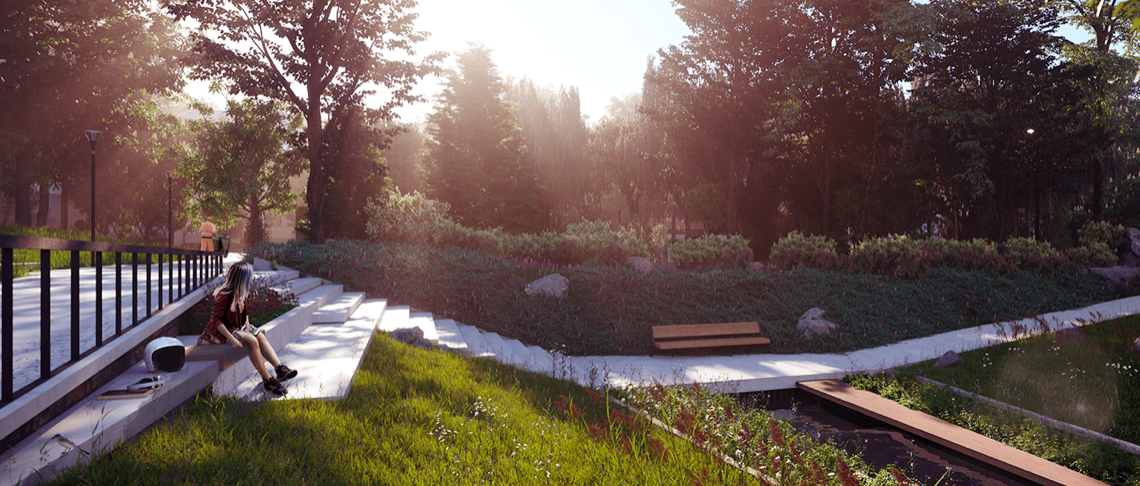
ALTMAN SQUARE Project by Semen Polomanyi, which will be implemented in September 2022 in Vinnytsia. Source: behance.net
The new project involves releasing part of the stream from the collector, preserving old trees, and, at the same time, constructing a new landscape. Semen Polomanyi is a landscape architect, and therefore thought through everything to the smallest detail: the park will be arranged in a way that water doesn't stagnate after rains, but flows down in cascades, is collected and stored in underground collectors, and later it can be used for irrigation. Thanks to rain gardens and a special approach, the ecosystem will be sustainable, and the renovated park will serve as a functional and beautiful public space.
The Pochaina River in Kyiv was also released from the collector. It was "locked up" in the 1930s to build the Obolon metro station and the Pochaina metro station. In 2016, the Kyiv City Council almost adopted a detailed plan of the territory, which would've finally buried the historical channel (by the way, according to some sources, it was in the Pochaina River that Prince Volodymyr baptized Kyivan Rus). The disastrous decision was prevented by activists, headed by Annabell Morina from Kyiv, head of the Pochaina public association; she fought for the river, and in 2017 the section of the channel acquired the status of a recreational territory, and already this year, work began on the Pochaina revival.
It's expected that the river will be "pulled" out of the collector and freed from (attention!) 900 tons of concrete! The new park will stretch from Bandera Avenue to Natalka Park. Three stages of construction are planned:
- the first is from Bandera Avenue to the flood gate near Verbova Street;
- the second is from the gateway to Naberezhno-Rybalska Street, the area behind Blockbuster;
- the third is the Volkovata Dnieper bay, where our park will connect with Natalka Park.
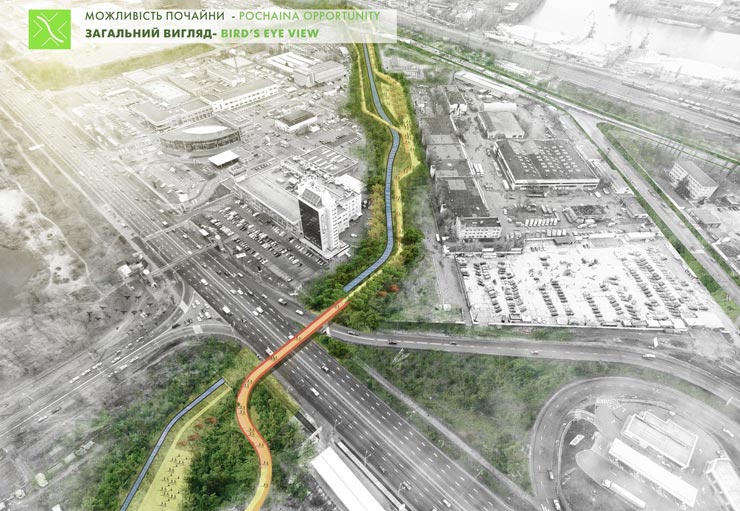
Visualization of the Pochaina park project from the NEXT SPACE architectural team. Source: hmarochos.kiev.ua
Now the Pochaina River is being freed from concrete, a channel is being formed, the bank is being cleared and paths are being laid. Trees and shrubs will be planted in the spring. The project will be implemented using funds from the city budget and will cost Kyiv 83.5 million hryvnias.
Interesting fact: the NEXT SPACE architectural team was advised by engineers from Seoul who revitalized the Cheonggyecheon River, which you read about a little above. It was those people whose project inspired the author of the bold idea of restoring the Khreshchatyk River, Viktor Bilous.
It is quite possible that with the proper support of the project by the public organization of Viktor Bilous and the correct reaction of the authorities, it will be conceivable to implement a project with a green zone on Khreshchatyk. In this case, Kyiv will also get ducks and a wonderful public space.


